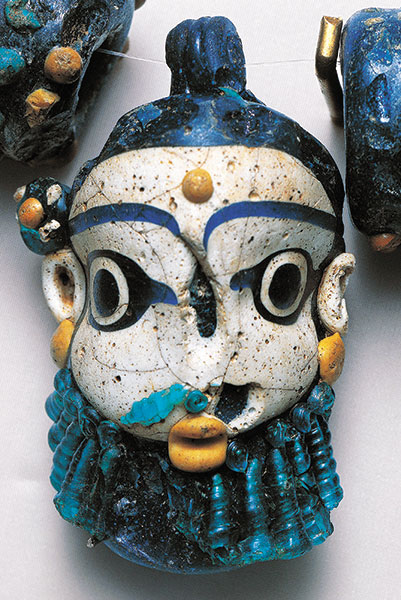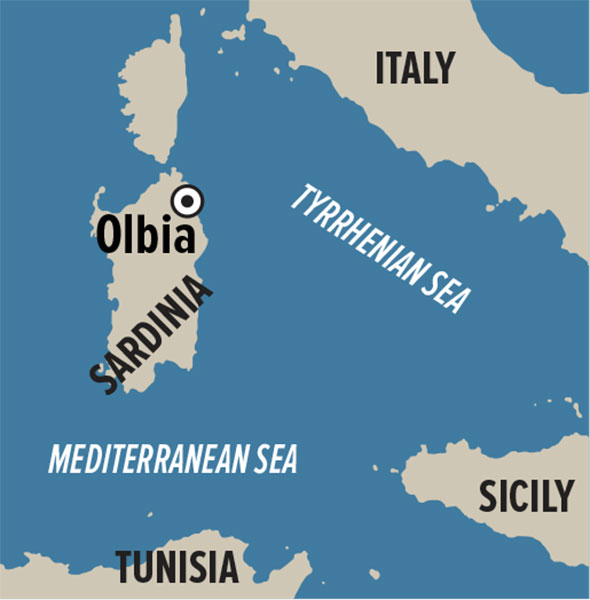
This 3-inch-tall glass pendant depicting a male figure with wide, staring eyes, puckered lips, a thick, wavy beard and tightly cropped hair was found in a Phoenician burial ground near the town of Olbia in Sardinia. Topped by a small suspension loop, the head (which likely represents the Phoenician god Melqart or Eshmoun) was the centerpiece of an elaborate beaded necklace made during the fourth or third century B.C.E. to protect the owner from harm and evil spirits in the world beyond.

Found throughout the Phoenician world, glass pendants depicting gods, demons and animals were produced in a variety of brilliant colors and styles using the so-called sand-core technique. The rough shape of the bead was molded with damp sand, wrapped in cloth, and then fixed to the end of a rod and dipped in molten glass. While the bead was still hot, other colors of molten glass, such as the translucent blues and opaque whites and yellows in this example, were added to create the bead’s unique facial features and designs.
Already a library member? Log in here.
Institution user? Log in with your IP address.

